The Standard Lease Agreement is a customary prototype used for the average transaction involving the rental of residential real estate. When a person shows interest in renting a particular property, they will want to arrange the terms of the occupancy with the landlord. If a settlement of these terms can occur, then the two (2) parties can enter them into the form to hold all participants accountable for their part of the relationship. Areas of the contract that will need to be confirmed within the document include the initial & ending date of the inhabitance, expenses associated with the rental (lease payments, security deposit, fees, etc.), and the standards required to remain on the premises. Once the agreement has been customized to both parties’ liking, they may proceed by endorsing the form with electronic (if the software is legitimate) or handwritten signatures.
By State
- Alabama
- Alaska
- Arizona
- Arkansas
- California
- Colorado
- Connecticut
- Delaware
- Florida
- Georgia
- Hawaii
- Idaho
- Illinois
- Indiana
- Iowa
- Kansas
- Kentucky
- Louisiana
- Maine
- Maryland
- Massachusetts
- Michigan
- Minnesota
- Mississippi
- Missouri
- Montana
- Nebraska
- Nevada
- New Hampshire
- New Jersey
- New Mexico
- New York
- North Carolina
- North Dakota
- Ohio
- Oklahoma
- Oregon
- Pennsylvania
- Rhode Island
- South Carolina
- South Dakota
- Tennessee
- Texas
- Utah
- Vermont
- Virginia
- Washington
- West Virginia
- Wisconsin
- Wyoming
What is a Residential Lease?
A standard lease is a bilateral contract that grants an individual, or “tenant”, the right to occupy a property for residential use that is owned by another in exchange for rent payments. The written lease agreement retains a record of the promises from both the tenant and owning entity, or “landlord”, along with clauses determining the particular terms and conditions associated with the arrangement.
Within the document are specifically defined parameters to tenancy covering most commonly the rent, lessor/lessee identification, property address, lease period, amount of security deposit, and designated responsibility for the unit’s expenses. Executing the created accord will legally hold each of the involved parties to the contents of the commitment, instating the lease’s commencement. An alternate term used to describe a tenant is the “lessee“, and the corresponding designation for a landlord is the “lessor“.
When to Use a Lease Agreement
For those that own an unoccupied residential property, leasing can be a beneficial engagement as an income source for the property holder. When the owner elects to rent, whether an apartment, house, room, condominium, or mobile home, the arrangement must be adequately recorded to hold all participants accountable. Documenting the understanding ensures that in the event of a possible default, the landlord and tenant will retain sufficient evidence of the inherent promises of the contract.
How Does a Standard Lease Work?
Leasing a property entails a lengthy process that requires dedicated actions to be carried out consecutively to get the job done. Following the listed steps as outlined below will help to proceed with an efficient approach.
- Step 1 – Prepare the Property/Establish the Lease Rate
- Step 2 – Market the Property/Show the Space
- Step 3 – Screen Prospective Tenants
- Step 4 – Negotiate and Draft the Lease Agreement
- Step 5 – Execute the Contract/Move-In
Step 1 – Prepare the Property/Establish the Lease Rate
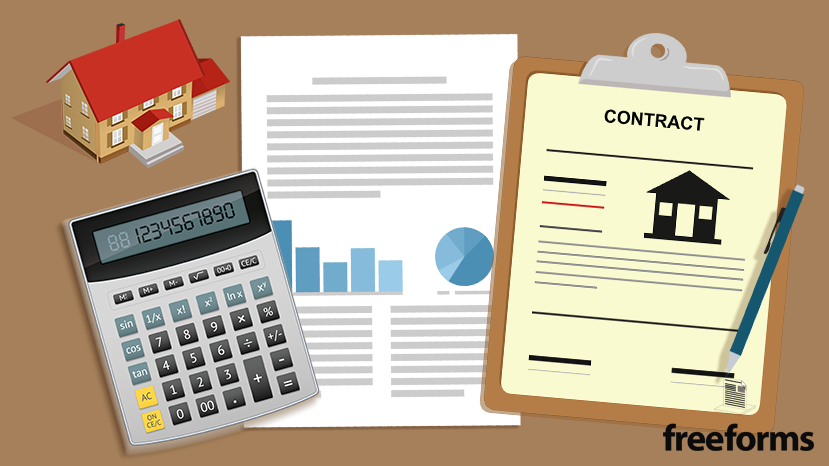
The first step is to ready the leased premises for possible interested parties to view and eventually occupy. Preparing the space will obligate the owner to make necessary repairs and clean the unit for tenant use. Presentation of the home will determine an appropriate value to renters, so it is recommended that the condition of the property and its amenities be restored to a decent condition. This can include but not be limited to adequate pest control, working appliances, compliance with building code, removal of previous tenant’s property.
Once the property’s appearance is satisfactory, the owner can calculate a feasible amount to charge in monthly rents. Many of the home’s expenses, such as the mortgage, management services, taxes, and substantial repairs, must be covered by the landlord. Consideration can then be decided to designate who will incur additional expenses such as utilities, cable/internet, phone, or related other services to the home.
Next, research the present climate regarding supply and demand related to area properties for lease and for sale, as this can affect what a tenant is willing to pay in a given market. Utilizing comparable units that are available or recently rented, the owner can further narrow down a reasonable rate. Set the rent in line with the denoted factors to develop an amount that will ideally be plausible for both the lessor and lessee to agree upon.
Step 2 – Market the Property/Show the Space
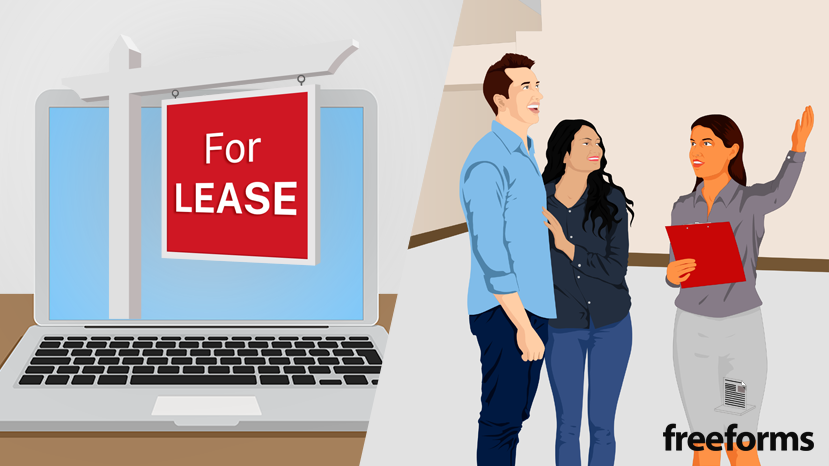
When the property is ready to be leased, it is time to list to seek out interested parties. Utilizing online listing services is a practical method that can help to reach a wider audience than traditional print advertisements. A few reputable websites that can assist in promoting a listing are:
Using one or multiple sites will allow possible renters to view photos and a description of the residential offering and make contact if it matches their needs. Next, the lessor can set up a time to tour the unit with the potential lessee to showcase the home and answer any questions about the property.
Step 3 – Screen Prospective Tenants
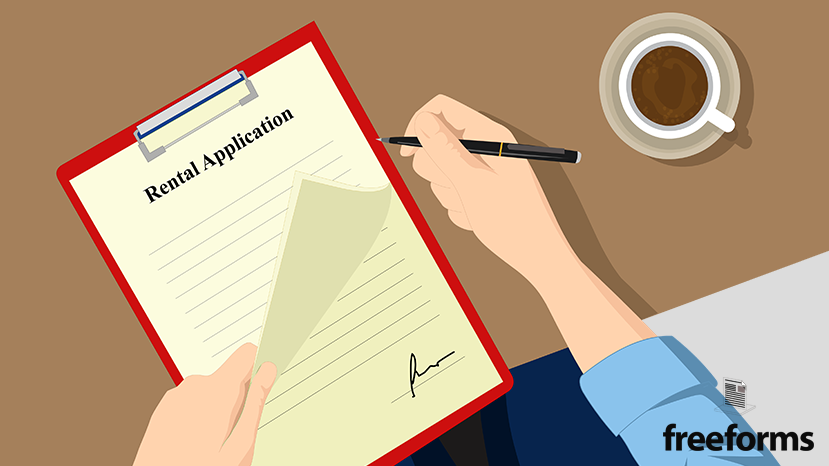
Applying to lease the dwelling is the next step toward occupancy once the individual is ready to move forward. A rental application will aid in obtaining pertinent information on the presumptive tenant(s) to allow the owner to evaluate eligibility to lease the space. The questionnaire prompts the applicant to provide their identity, rental history, income, personal/professional references, social security number, and criminal record information. In many cases, the landlord may ask for recent employer pay stubs, bank account statements, and/or tax documents to further prove current earnings.
Typically when handing in the paperwork, a fee is charged to the applying individual to cover the costs associated with a background check. The formal inquiry can be completed with expressed permission from the applicant by submitting the information to one of the following approved tenant screening providers:
The company will furnish a comprehensive report summarizing the prospective tenant’s credit score and other relevant rental and financial standings. From there, the produced references can be contacted to substantiate the potential renter’s suitability to lease the home.
Step 4 – Negotiate and Draft the Lease Agreement
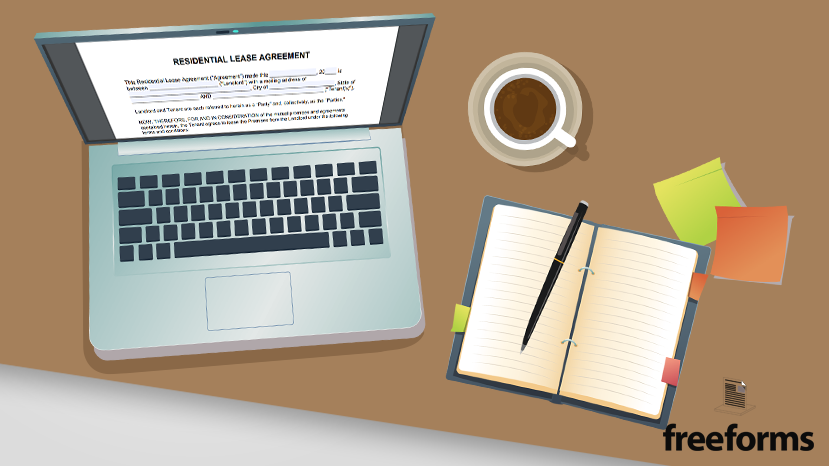
The owner/property manager will first need to print or download the standard residential lease agreement PDF file for the particular state in which the property is located. The supplied forms contain each state’s required disclosures and many of the common clauses consistent with the lease of real estate. Most lease contracts include sections confirming the following:
- Tenant and Landlord Identification
- Property Address
- Monthly Lease Rate
- Length of Lease Term
- Security Deposit Amount
- Utilities
- Penalties/Fees
- Property Use
Other clauses typically found within a lease help clarify expectations connected to property policies or protect the landlord from liability. It is usually standard practice for the lessor to set the rent and many of the various terms of the lease as they see fit. If the tenant prefers to negotiate one or more provisions, the landlord can choose to adjust the paperwork or deny the request. Having a solid rental history or favorable income classification may situate the lessee with sufficient standing to ask for tweaking of the contract to meet their needs in specific categories.
Step 5 – Execute the Contract/Move-In

Once all participants are satisfied with the contents of the written arrangement, it can be executed in accordance with state requirements. After the lease is signed and initial rents and security deposits are received, the tenant can occupy the residence on the designated lease term start date.
It is advised that the lessor provide a move-in checklist, inspecting the property with the tenant on or before the first day of occupancy. The document serves to establish corroboration between the parties in regard to the physical state of the space on the day the lessee moves in. The record is then used to compare the unit’s condition at the end of the lease period, determining if there are any damages owed to the landlord.
Frequently Asked Questions (FAQ)
What Is the Difference Between a Standard Lease and a Month-to-Month Lease?
A standard lease is issued for a fixed period, typically twelve (12) months in length, although this can vary depending on the type of rental and negotiated terms of the agreement. A month-to-month lease implies that the contract can be terminated with advance notice of thirty (30) days by either the tenant or landlord. A month-to-month lease (tenancy at will) can be an ideal arrangement for those that wish to rent on a short-term basis. Because the term is not fixed, this can also allow the landlord to raise the rent at their discretion and does not guarantee a locked-in rate or secure tenancy for more than thirty (30) days. Disadvantages of month-to-month leases can include the possibility of a longer vacancy duration with less time to market the property if the tenant terminates the lease.
Does a Lease Need to Be Notarized?
Many states require either a witness or notary public to corroborate the execution of certain contracts. For standard twelve (12) month residential lease agreements, attestation from a licensed notary is not needed to instate the commitment. Several states have defined regulation that mandates a notary to supervise and substantiate the endorsement process for those lease arrangements with terms longer than a one (1) year period. Make sure to review your state’s legislature regarding notarization if you plan to sign a longer-term lease.
Can a Lease be Signed Electronically?
Since the United States passed the Electronic Signatures in Global and National Commerce Act in October of 2000, numerous contracts are legally permissible to be endorsed by electronic signature. In addition to many other documents, lease agreements can be executed by utilizing an official e-signature service provider such as eSign. Simply click on the supplied link to upload the lease and follow the prompted instructions.
What is Prorated Rent?
When a tenant begins the lease on a date other than the first (1st) of the month, usually, the landlord will opt to prorate the additional occupancy days. Prorating the supplementary days will allow the subsequent rental payments to be due on the first (1st) day of each month instead of a day that falls somewhere in the middle. The prorated amount is then tacked on to the initial rent and security deposit requirements to be covered by the tenant.
How to Calculate Prorated Rent
The specific amount to charge a lessee for prorated rent can be calculated by utilizing many different methods but is most often formulated by the number of days in a year. Performing the calculation can be accomplished by multiplying the monthly rental rate by twelve (12), then dividing the result by the 365 (days in the year). The received number can then be multiplied by the total amount of prorated days.
Example: If the tenant is moving in on the 15th of September, there will be fifteen (15) days of prorated rent out of a total of thirty (30) days in the month. If the monthly rental rate is $2,000 per month, the following formula can be used to ascertain the correct charge of prorated rent:
( ($2,000 x 12) ÷ 365 ) x 15 = $986.30
Ensure that the prorated rental costs are officially recorded within the lease document and that receipt is issued upon payment of the amount.
Can a Landlord Break a Lease?
A landlord has the right to break a lease if there is a valid reason to do so. Examples can include occurrences where the tenant fails to pay rent or violates a lease provision. Under circumstances where multiple rent payments are in arrears or a policy is being infringed upon, the property owner can seek to evict the lessee or cancel the leasing contract. These options will necessitate the landlord to inform the tenant in writing of the intent to move forward.
Other possible instances that could warrant lease termination are if the owner needs to move into the home or if they want to sell the property. Each state has different imposed laws on these subjects, so it is recommended that you research the legalities according to your state’s governing code before proceeding. Some states will allow a landlord to end the lease prematurely if they need to utilize the property as their residence, as long as they remain for the required period. Usually, to break a lease to sell the property, it must be specified within the original contract to be designated as a legitimate case for early termination.
Can a Tenant Break a Lease?
A tenant that signs a standard twelve (12) month lease will be responsible for upholding their promises to pay rent as expressed in the contract. A tenant has a right to break the lease if the conditions provided by the landlord are deemed uninhabitable. This would apply to cases where the property owner fails to furnish necessary elements such as heating, running water, or other essential repairs. Otherwise, should the tenant require early termination of the agreement for personal reasons, there are several ways that it can play out. Communicating the reason(s) for breaking the lease and a commitment to financially rectify the situation can be key to avoiding excessive cancellation penalties, eviction, or legal action.
The most crucial step to take should a tenant want to get out of a lease is to read the lease agreement to understand the commitment thoroughly. Then, the best course of action to take would be to seek advisement from a trusted source such as a knowledgeable family member, friend, or attorney. Consider developing possible termination offers to present to the landlord with the understanding that compensation for breaching the accord will apply. It is then best to contact the landlord or property manager to try to come to an agreement on how to work out a settlement. Finding another suitable tenant (or subletting the unit) for the property is in the best interest of the lessee to minimize fees associated with cancelation. Or, if the lessor is open to negotiation, you can present an offer to pay a specified number of rental payments to terminate early. Upon establishing an arrangement to end the lease, it is vital that the terms be recorded in writing for both parties to sign.
Sample Sublease Agreement
Download: Adobe PDF, MS Word (.docx)


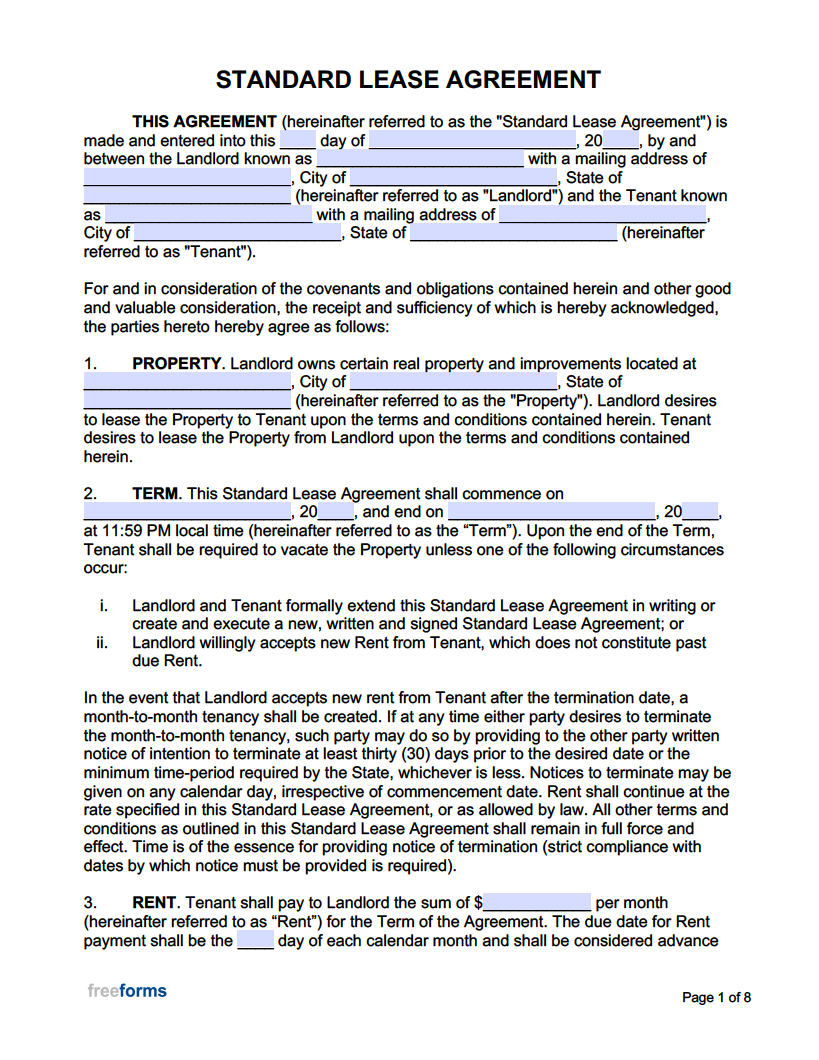
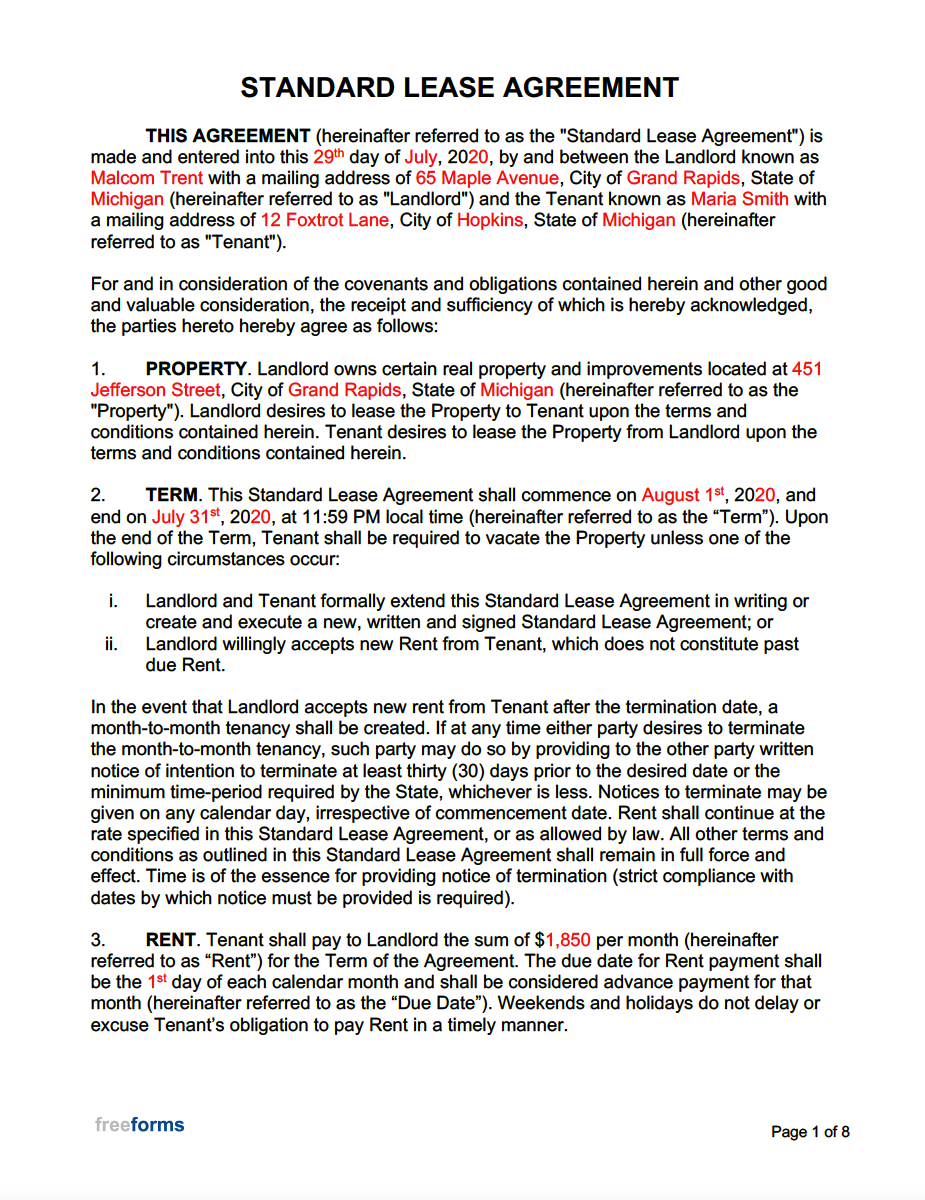
0 comments
Comments are closed.